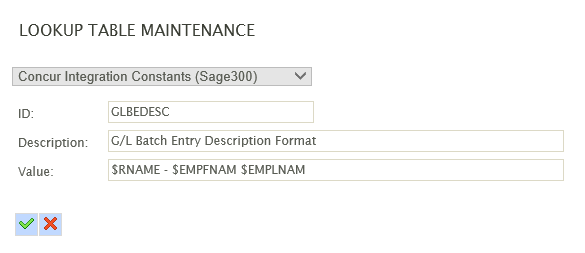Field Tokenisation
Field Tokenisation provides the means to customise how entries are populated ad how some fields such as Account and Project Codes can be composed.
Where a token is specified the token is substituted by the corresponding field’s value from the File Export data.
|
File Export Field Name |
Token |
|---|---|
|
Branch |
$BRNCH |
|
Business Unit |
$BUSUNT |
|
Campaign |
$CAMP |
|
Client |
$CLINT |
|
Client Matter |
$CLIMAT |
|
Client:Campaign |
$CLICAM |
|
Client:Service |
$CLISVC |
|
Company |
$COMP |
|
Cost Centre |
$CC |
|
Customer:Job |
$CUSJOB |
|
Customer:Project |
$CUSJPRJ |
|
Department |
$DEP |
|
Division |
$DIV |
|
Employee First Name |
$EMPFNAM |
|
Employee Id |
$EMPID |
|
Employee Last Name |
$EMPLNAM |
|
Entity |
$ENT |
|
Function |
$FUN |
|
Is Billable? |
$ISBILLNOINV |
|
Is Billable? (Invoice) |
$ISBILLINV |
|
Job |
$JOB |
|
Location |
$LOC |
|
Market |
$MKT |
|
Practice Area |
$PRCAREA |
|
Product |
$PRD |
|
Profit Centre |
$PFTCTR |
|
Program |
$PRG |
|
Project |
$PROJ |
|
Region |
$REG |
|
Report Entry Description |
$EDESC |
|
Report Entry Expense Type Name |
$RTNAME |
|
Report Entry Vendor Description |
$EVDESC |
|
Report Entry Vendor Name |
$EVNAM |
|
Report ID |
$RID |
|
Report Name |
$RNAME |
|
Service |
$SVC |
|
Store |
$STR |
Example
The above example (taken from the Sage300 setup) will populate the corresponding field in Sage300 with:
- The Report Name field.
- A space character, then a single dash then another space field.
- The Employee First Name field.
- A single space.
- The Employee Last Name field.
